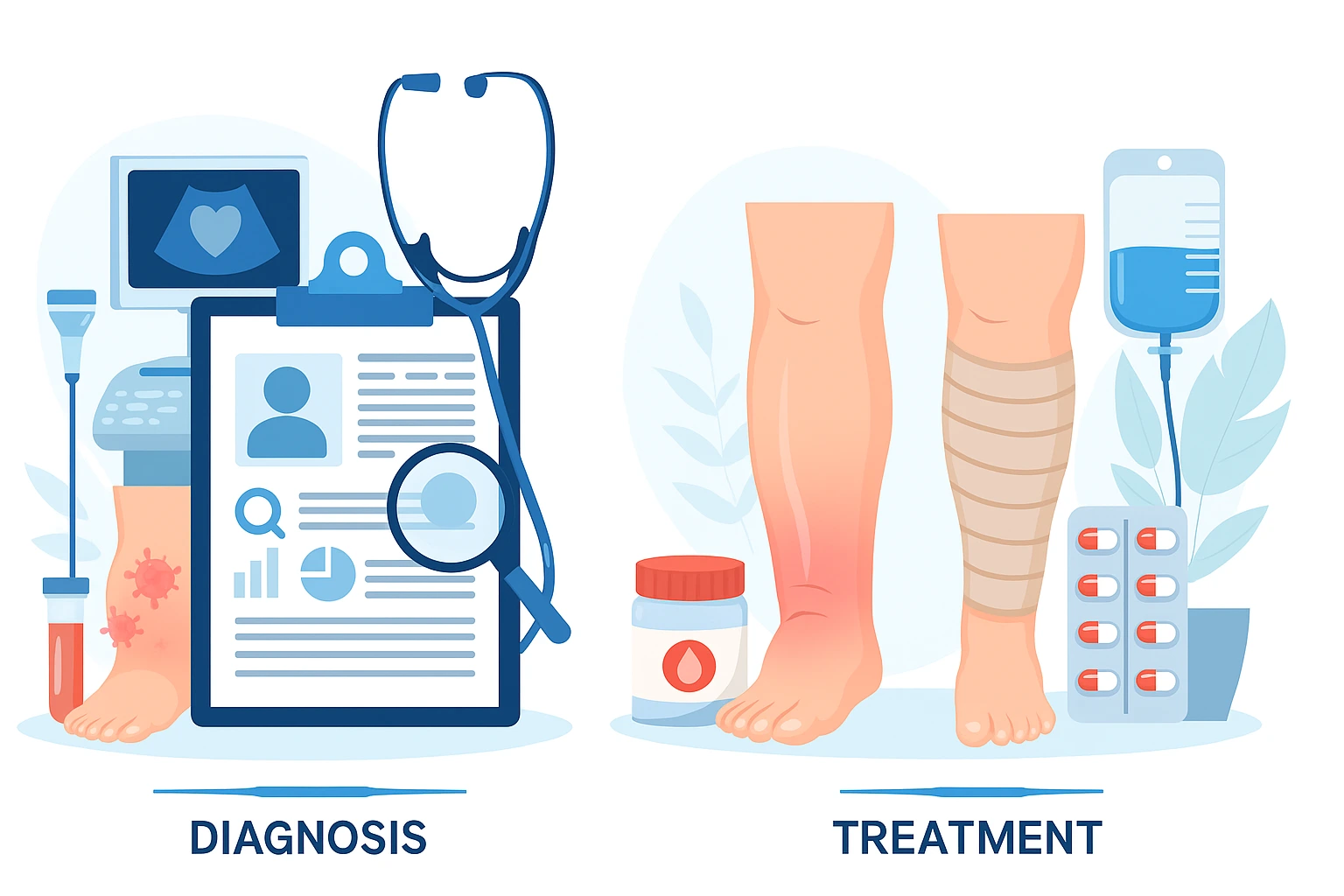Did you ever find that by evening your shoe felt a little tighter, or did your rings suddenly put up a fight? Swelling may appear occasionally and may seem harmless at the time, yet it could be a sign of what’s called edema, a medical term for abnormal fluid accumulation inside the body’s tissues. Left untreated, edema can suggest heart, kidney, or liver problems; hence, one needs to diagnose and treat the problem at an early stage.
Why Is This Edema Important?
Edema is more than “just swelling.” Edema affects millions globally, with issues that come with it ranging from mere puffiness that shall pass in an hour to the edemic manifestation of a life-threatening disease. According to the Cleveland Clinic, chronic edema might indicate illnesses such as congestive heart failure or kidney disease. The earlier one catches the symptoms, the better to prevent complications such as restricted mobility, ulcers on the skin, or even organ damage.
How Is Edema Diagnosed?
Step 1: Physical Examination
The doctor usually starts by applying gentle pressure to the swollen area. If an indentation marks the area after pressure application, then the edema is called “pitting” edema. The distribution of swelling means that the ankle, legs, face, or abdomen can offer important clues about the cause.
Step 2: Medical History
Healthcare providers often ask about these situations:
- Recent travel or prolonged sitting periods (which can cause leg swelling).
- Medications such as calcium channel blockers, NSAIDs, or corticosteroids.
Step 3: Diagnostic Tests
These tests are ordered by the physician, as they attempt to identify the cause:
- Blood tests (kidney, liver, and thyroid function).
- Urinalysis (testing for loss of protein in the urine).
- Ultrasound or echocardiogram (to look for blood clots or heart failure).
- MRI or CT scans (if suspected deep vein thrombosis or dysfunction of organs).
Treatment Options for Edema
Lifestyle Modifications and Self-Care
Mild swelling can be reduced by simple measures:
- Elevate the legs above the heart for 15–20 minutes daily.
- Reduce salt intake as sodium causes fluid retention.
- Use compression stockings to enhance circulation.
- Walk, even lightly, to prevent pooling of fluid.
Step 2: Medical History
The healthcare provider often inquires about:
- Recent travel or long sitting periods (which can cause leg swelling).
- Drugs like calcium channel blockers, NSAIDs, or corticosteroids.
- Albumin infusions in cases linked to severe protein loss.
Step 3: Treating the Underlying Cause
- Heart failure: This is managed through lifestyle changes, medicines, or implants such as pacemakers.
- Kidney disease: This usually requires dialysis in the advanced stage.
- Liver cirrhosis: This requires sodium restriction, medications, or sometimes transplantation.
Real-World Case Example
A 58-year-old male patient came to Mayo Clinic because of previous leg swelling. The preliminary tests revealed high blood pressure and abnormal kidney function. After diagnosing him with chronic kidney disease, his treatment included diuretics, a low salt diet, and dialysis. His edema began to recede in the next few weeks, thereby increasing his mobility and quality of life. This is just to show why going after the root cause of the problem is very important as opposed to the symptoms, i.e., swelling.
Actionable Tips to Manage Edema at Home
- Drink lots of water to flush out sodium.
- Avoid sitting or standing for hours, take a break every 30 minutes.
- Keep track of swelling every day (using photos or measurements) to relay information to your doctor.
- Eat healthy foods with potassium: bananas and spinach
What’s Coming Up in Edema Treatment?
Medical research is investigating novel therapies, including lymphatic drainage devices as well as the delivery of superior drugs for controlling fluid retention at the cellular level. There is also the increasing involvement of telemedicine to make it convenient for monitoring from home, and thus, patients can give real-time updates on the swelling status to their physicians.
Conclusion
Swelling is not only inconvenient but is often an indication that something deeper is going on in the body. Early treatment is therefore imperative, reproducible through anything ranging from lifestyle modifications to advanced medical treatments.
Key Takeaway: If you notice persistent swelling, don’t dismiss it. Seek medical advice promptly to uncover the cause and begin the right treatment.
Want more health guides like this? Subscribe to our blog for expert-backed wellness insights every week.




